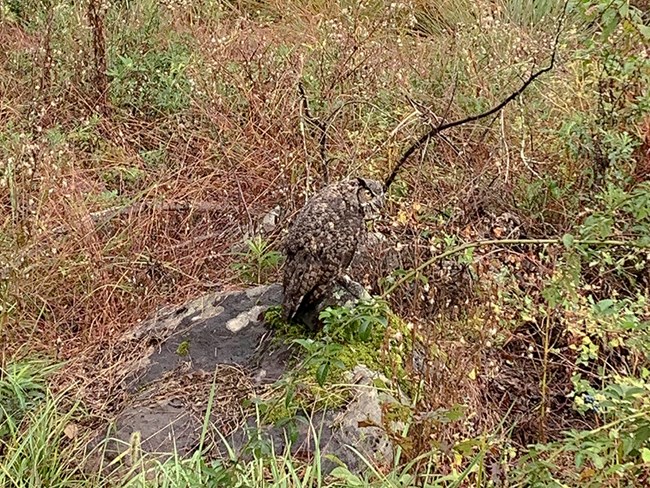Last updated: June 21, 2024
Article
Wildlife and Lead Poisoning

NPS Photo
The staff at Gettysburg National Military Park would like the public to be aware of the impact that the use of leaded ammuntion has on wildlife and the foodchain.
In the autumn of 2021 we received a report of a Great Horned Owl that was exhibiting abnormal behavior. It was standing on a rock in the southern area of the battlefield unable, or unwilling, to move when people approached it. A volunteer from the West Shore Wildlife Center and the park biologist managed to safely capture the owl and transport it to the West Shore Wildlife Center. After an examination it was determined that this owl was suffering from lead poisoning. Unfortunately, lead poisoning is not an uncommon phenomenon in birds of prey and other wildlife.
The source of this lead is from lead-core rifle bullets, mostly used by hunters and those who wish to control nuisance wildlife. While legal hunting is a practice that helps manage wildlife at a sustainable level and helps connect people with nature, the use of leaded ammunition can have serious effects on non-target species. When a leaded bullet strikes an animal, it fragments into hundreds of tiny pieces. It is likely that this owl preyed or scavenged on a small mammal or animal part that was shot with a leaded bullet. All the tiny fragments entered the owl via the digestive system. This problem can be solved by the use of lead-free ammunition, which is gaining popularity and is strongly encouraged.
If you would like to learn more about this issue and how you can help, both Pinnacles National Park and the Wildlife Center of Virginia have some very helpful information on their websites.
Our owl is still being treated and we hope for good news, but often lead poisoning has long-term impacts, even if the animal initially survives.
